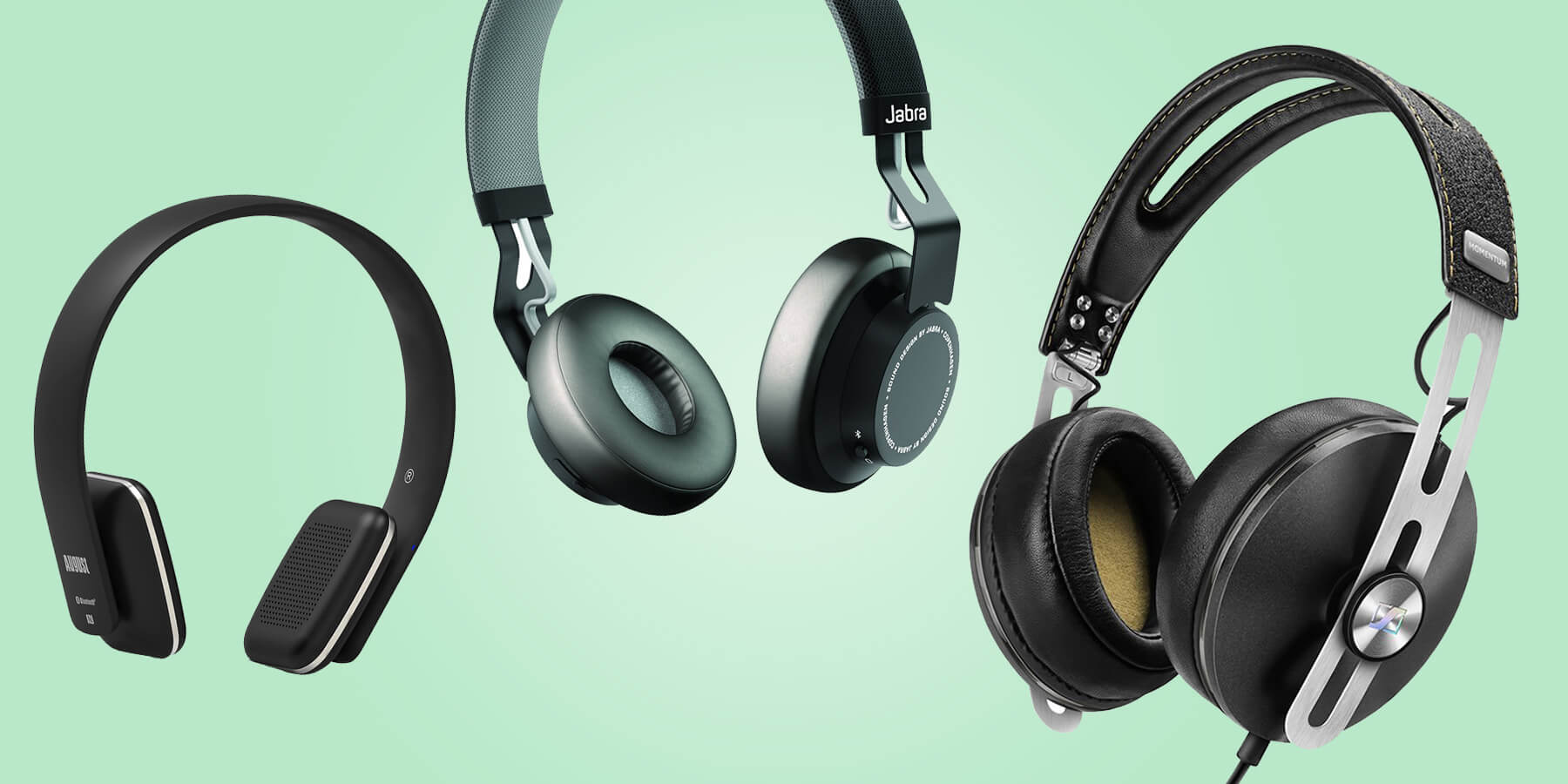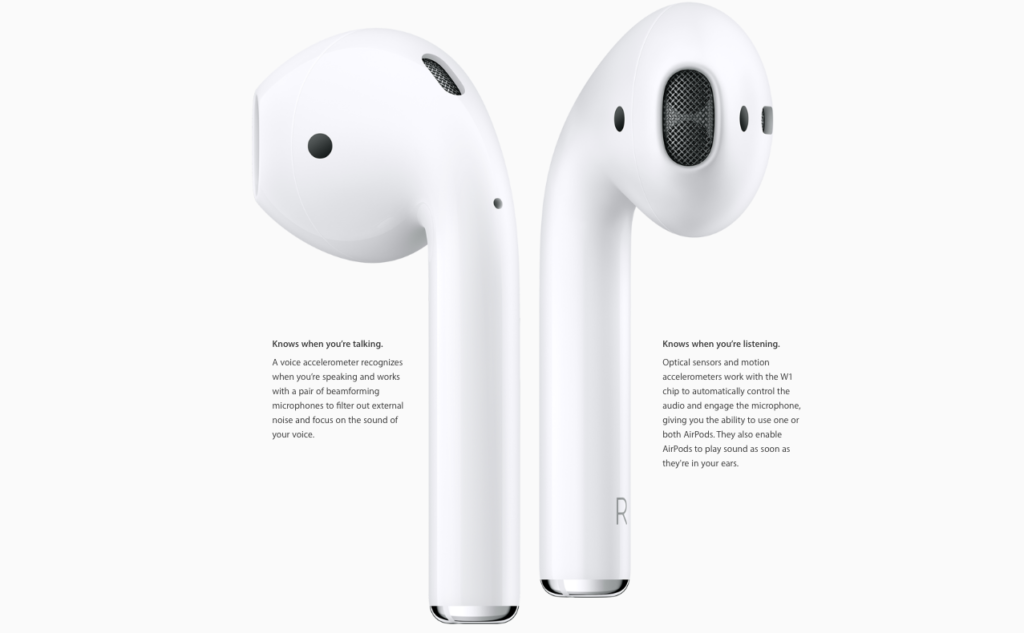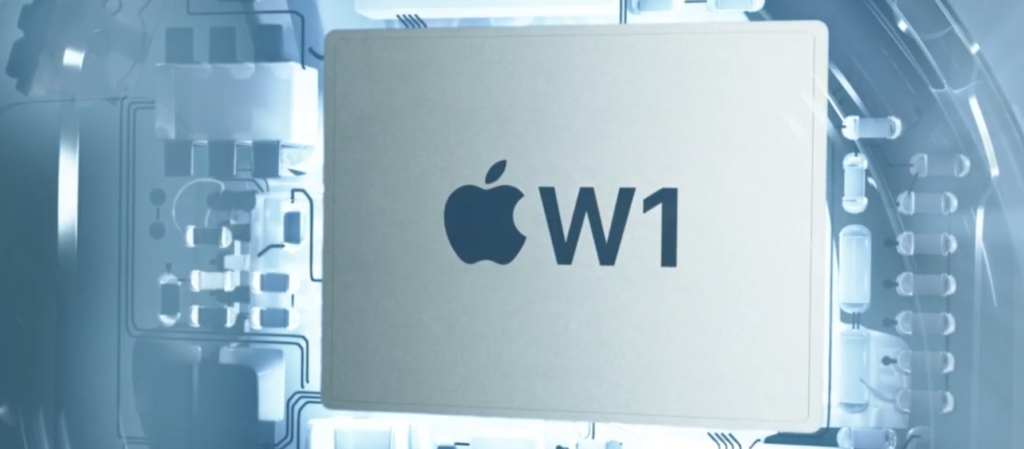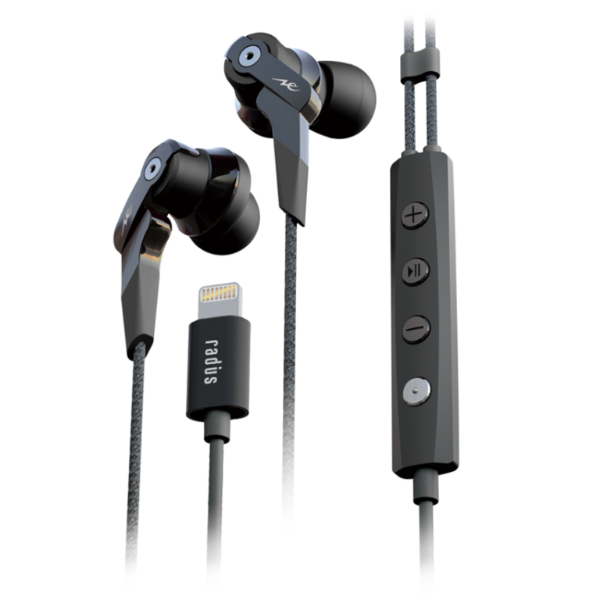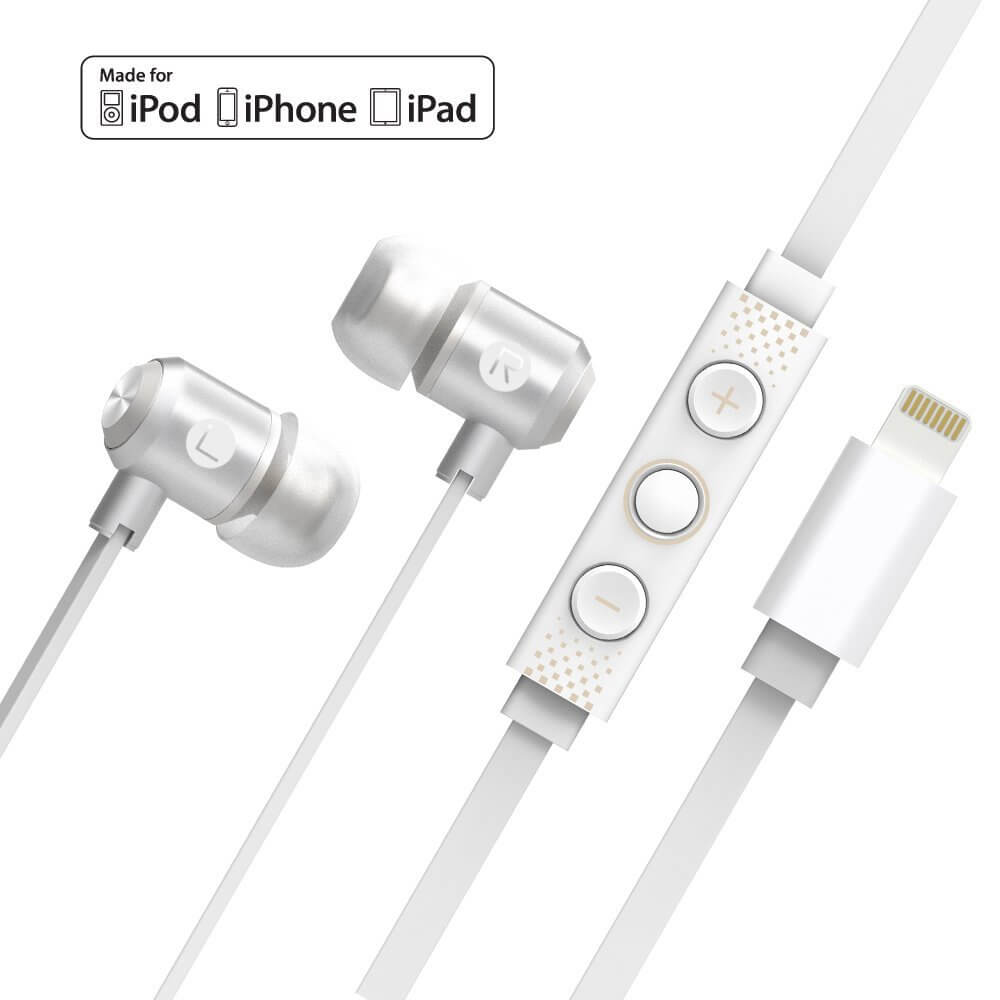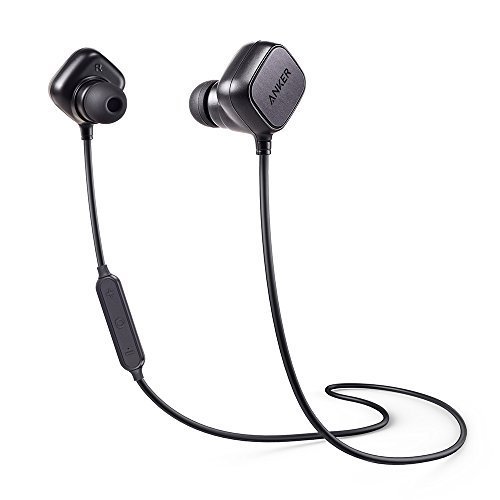Apple made steps to revolutionize the audio landscape in 2016 by removing the headphone jack from the iPhone 7. It means that hundreds of headphone sets previously used by iPhone users became obsolete in terms of compatibility with the device. So, for those that have the new device, and others not yet upgraded, what are your options when it comes to headphones as we move into 2017?
A recap: Where did that headphone jack go?
In early 2016 rumors began to arise that Apple was considering removing the headphone jack from its flagship iPhone product. This meant the near universal compatibility of the 3.5mm headphone jack – a standard audio connector since the 1950s – would no longer be quite as universal for iPhone users. The thought was met with negative feedback, but was eventually accepted into the general lexicon when it came to the next update. Because surely, Apple would have a solution?
The solution? AirPods
The solution was two-fold. Firstly, Apple would bundle the same earbuds as before with the iPhone 7, except they would come with a Lightning connector following the removal of the headphone jack. It would mean they’d connect to the same input as the charging cable.
The other option, was AirPods. AirPods would be Apple’s answer to the wireless revolution. Whereas other wireless headphones either come as a set of over-ear cans, connected by the traditional over-head band, or a set of earbuds, usually connected via a wire that goes around the back of the neck to keep them together. AirPods, however, would do away with that wire as well. To stop them getting lost, they were designed to sit within an easy to carry around case when not in use.
This case was the cornerstone of these buds. The earpieces themselves would have a playback time of five hours. But the case itself would also hold charge, adding up to a total of 24 hours of play time. Impressive. Users would charge the case, which in turn would power the earphones.
But it wasn’t just charging. The case also addressed the often lack of reliability of pairing and Bluetooth. Simply opening the lid of the case would instantly connect the headphones to the device thanks to a new W1 chip. This chip also allowed for additional gestures, such as tapping the bud to call up Siri or take a phone call. It can also sense when the buds are inserted into the ear and won’t start playing until they’re in position.
They were initially set for an October release – around a month after the release of the iPhone 7. Not ideal, and it meant users would have to either use their Lightning buds, or a third-party wireless solution until then.
It first became apparent the AirPods shipping date had slipped towards the end of October. A query from TechCrunch prompted Apple to respond and provide an update:
“The early response to AirPods has been incredible. We don’t believe in shipping a product before it’s ready, and we need a little more time before AirPods are ready for our customers.”
While it’s a respectable decision to delay the product until Apple engineers were satisfied, it was still a blow to users waiting to pair their latest handset with Apple’s latest audio technology. The Apple camp remained quiet until a full month later.
On November 30, Tim Cook personally responded to an email from a customer (as he’s been known to do on occasion) providing an update. The email was forwarded to MacRumors which revealed both sides of the conversation. They wrote:
Customer’s comment: “Give us a release date. I really bought in to the wireless vision you painted. Now I’m stuck waiting with my EarPods but can’t charge my 7 at the same time which I need to do at work. Let us know if it’s a month or 6 months, because then I’ll just buy some other wireless headphones.”
Tim Cook’s response: “Thanks for your note. Sorry for the delay—we are finalizing them and I anticipate we will begin to ship over the next few weeks.”
Of course, AirPods have now been released – but with demand on the first day of sale, it’s unlikely a customer would now receive an order in time for Christmas. Furthermore, Apple is a premium company. Those that splashed out on an iPhone 7 might not want to pay the extra $159 for AirPods, and those that haven’t upgraded yet, might want to test the waters in the wireless headphone games before taking the plunge in the iPhone 7 or the AirPods.
With this in mind, and with plenty of time for buying gifts this holiday season, we’re going to take a look at the wireless and non-wireless options for all iPhone users looking to upgrade their headphone game.
The alternatives
Lightning headphones
This is the obvious one for the iPhone 7 user that’s not ready to go wireless. Sure, the device is bundled with Apple’s own offering, but the sound quality isn’t high-end, and can be expensive to replace if you lose them or they break.
Unfortunately, as of the end of 2016, there aren’t a huge number of viable alternatives.
But there are a few companies doing interesting things. Take Phaz, for example, the Phaz P2 Over-Ear noise-isolating headphones connect to an iPhone via Lightning… but we’re not talking about listening via a Lightning cable – they charge your device while you listen. There’s a range of options – higher-end ones cost around $250 for Bluetooth listening, whereas if you’re still on a device with a headphone jack you can get the P2 model for $99 on Amazon. If you’re based outside the US, the full range is available on the Phaz Music website.
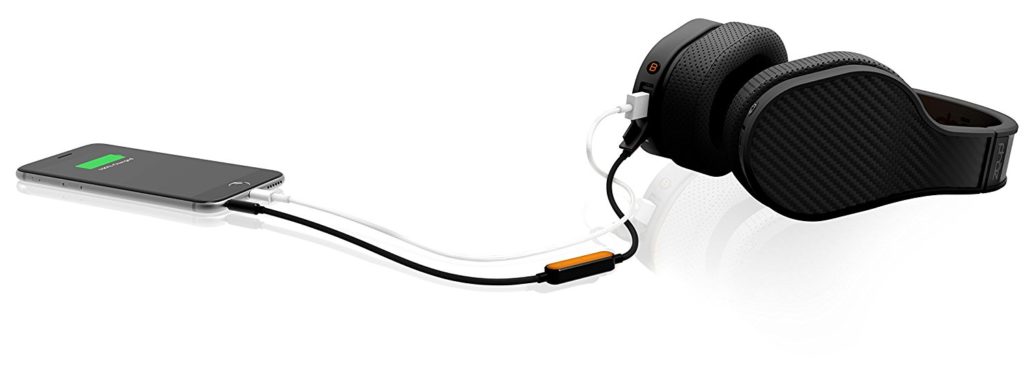 Phaz P2 Over Ear Noise Isolating Headphone with Built in Power Bank
Phaz P2 Over Ear Noise Isolating Headphone with Built in Power Bank
Elsewhere, you’re looking at fewer options for the higher-end Lightning headphones, such as the Radius in-ear set – $154 on Amazon, but this pair doesn’t have any reviews. And outside the US, your Lightning options are even more limited unless you wish to import.
One option available more widely is the JBL Reflect Aware in-ear sport headphones for $199.95 (Amazon US) / £169 (Amazon UK)
For over-ear options, Philips do a decent set with their Fidelio M2L High Resolution Headphones for $129 (Amazon US) / £200 (Amazon UK)
Budget options are easier to find, but unfortunately they’re generally only 3-3.5 star options:
Omars Apple MFI Approved Pure Lightning In-Ear Earbud Headphones – $34.99 (Amazon US) / £26.99 (Amazon UK)
Brightech – Apple MFI Approved Pure Lightning Earphones – $39.99 (Amazon US)
SHARKK Lightning headphones – £49.99 (Amazon UK)
There are some purpose built Lightning solutions either on Kickstarter, or forthcoming, but if you’re sure you don’t want wireless and need to go the Lightning headphone route, you might be best off getting one of Apple’s $9 dongles (if you don’t have the one bundled with the iPhone 7) and using a regular pair of wired plugs.
Wireless headphones
This is currently the only real solution, and pretty much what Apple is trying to drive us towards. The idea with removing the 3.5mm jack wasn’t to force us to use Lightning headphones because of any boost in quality, it’s to live the wireless lifestyle.
Wireless essentially means connecting via Bluetooth, a technology that is actually pretty old, and has been on the iPhone for years. Though it’s not the best technology in the world, many manufacturers are making decent products. So, in this next section we’re going to look at the two different types of wireless headphones: over-ear, and in-ear. For each type we’ll show you what we consider the best of the best, based on our own experience, others’ reviews and long-term user satisfactions. We’ll take into account audio quality, connectivity and value. So while they might not be the most expensive, they’ll not be budget pairs. We’ll then pick the best, reasonably priced pair, and end on a pair that’s trying to do something different – whether that’s design, fit or connectivity initiative.
First, let’s look at in-ear buds.
In-Ear, Wireless headphones
Best on a budget: Mpow Swift Bluetooth
Like regular wired headphones, it’s easy to find budget sets, but unlike wired headphones, it’s harder to find budget bluetooth sets that are actually half-decent. The Mpow Swift Bluetooth’s are a notable exception – they’ve a fairly good six-hour battery life and a variety of different buds to ensure a good fit for everyone. The sound is also good at this price-point. While they don’t include a mic, or buttons for controlling audio, they’re extremely easy to use. So, if you’re looking to make the jump to Bluetooth headphones, these are a great gateway to the technology without blowing all your money on a high-end pair.
.
$18.99 • Buy now
£15.29 • Buy now
Best mid-priced: Plantronics BackBeat Go 2 Wireless Earbuds
The sound on the BackBeat Go 2 is great – the highs are crisp, the mid-tone’s natural, and the bass is rich. They’re also sweat and moisture resistance and offer multiple fit options. What sets these apart is that they come with their own charging case, so while the buds will give you 4.5 hours listening or talk time (they come with a built in mic and music controls), they also come with a charging pack which can provide an additional 10 hours if you’re on the go. These earphones are a great next step on the Bluetooth headphone journey and provide a similar charging function that Apple’s Airpods will.
$57.27 • Buy now
£56.22 • Buy now
BEST HIGH-END EARPHONES
Jabra Sport Pulse Wireless
Not only do the Jabra Sport Pulse earbuds come with all the usual bells and whistles; a built in microphone, alongside play and pause buttons, they also come with a compatible app. This can provide personalized audio coaching and the option to create fitness goals. This headset also contains a feature few others have, which is an in-ear heart rate monitor designed to provide precise feedback as you train. The Jabra’s are right at the top end in terms of quality for in-ear headphones, but, as the name suggests, they’re purely focused on sport. However, due to the in-ear wireless headphones popularity in the fitness market, it’s no surprise that earbuds at this price-point really drive home their health compatibility.
$95.99 • Buy now
£89.55 • Buy now
Also consider: Anker SoundBuds Sport IE20
These buds are essentially another budget option, but they still manage to do something really innovative. Not only do these wireless headphones contain CVC 6.0 Noise Cancellation, a respectable 8-hour playback time, and microphone, they also use magnets to pair with your device. The idea is that, at rest, the backs of each bud sit side by side, stuck together with a magnetic panel. When you pull them apart, they instantly pair to your iPhone. If you’re taking a call, pulling the headphones apart will also activate the call and you can use the built-in mic to take the call. The magnetic function is a really neat approach that no one else appears to be doing at the moment. However, though the sound quality is decent, it’s not groundbreaking, and they’ll often come apart and unintentionally pair with your device if they’re in a pocket or bag. Despite this, there’s some great features here for an amazing price.
Over-Ear, Wireless headphones
 It’s rare that a set of headphones can do so much for so little, but August is one of those brands that’s cropped up in recent years that’s really pushing the limits of the technology. For a pretty low price you can get a set of Bluetooth over-head headphones which also connect to a device using NFC – near-field communication, the same technology Apple Pay uses. You also get a built-in microphone all housed in the subtle ear panels. These are also super comfortable and lightweight and great for long-term use. These headphones have been out for awhile now but we’ve been using them for a year and believe they’re some of the best you can get at this price. As for sound quality – they can easily give many of the mid-range headsets a run for their money.
It’s rare that a set of headphones can do so much for so little, but August is one of those brands that’s cropped up in recent years that’s really pushing the limits of the technology. For a pretty low price you can get a set of Bluetooth over-head headphones which also connect to a device using NFC – near-field communication, the same technology Apple Pay uses. You also get a built-in microphone all housed in the subtle ear panels. These are also super comfortable and lightweight and great for long-term use. These headphones have been out for awhile now but we’ve been using them for a year and believe they’re some of the best you can get at this price. As for sound quality – they can easily give many of the mid-range headsets a run for their money.$29.95 • Buy now
£27.95 • Buy now
BEST MID-RANGE
Jabra Move Wireless Stereo Headset (£55.27)
A great headset at the mid-range; ultra-lightweight, the stainless steel headband is housed in a dirt-resistant fabric to keep your headphones looking great for longer. There’s a respectable 8 hours of talk and music time (a mic is built-in) while even if they remain on standby there’s a good 12 days of power. Soundwise, these are great all-rounders with highs, mids and lows all coming out nice and balanced. They’re also easy to use – there are volume options for up and down which also control moving a track forward or back. An off and on button comes in the form of a toggle; an easier method than the single button that most headphones have. These Jabra’s often go for a much higher price meaning that while they stay at this price, you’re getting a bargain even for a mid-range set.
$59.99 • Buy now
£55.27 • Buy now
BEST HIGH-END
Sennheiser Momentum 2.0 Wireless with Active Noise Cancellation (£199)
Okay, so this is a pretty big jump but Sennheiser is a hugely respectable brand and if you really want the best of the best and you’ve some cash burning a hole in your pocket then it’s worth having a look at the Momentum 2.0 with noise cancellation. Real instruments sound incredible rich in these headphones, while those that love a deep bass will also be satisfied. We also approve of the delightfully retro design and even better, these cans feel premium, covering the headband with a beautiful leather, leaving exposed steel as the band attaches to the headphones. The battery life on these is incredible – 22-hours even with Bluetooth and noise cancellation, while a cable can also be attached if that runs out turning these into a Bluetooth/wired hybrid. Elsewhere, there are two microphones for better voice quality on calls and they come with a two-year warranty.
$379.99 • Buy now
£369.99 • Buy now
Hopefully the above has given you some more options – whether you’ve a device without a headphone jack, or simply want to give wireless a shot. For those that no longer want to wait for AirPods, it’s worth looking at other headphones that can provide some superior audio quality for a similar price.
